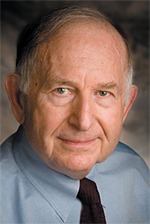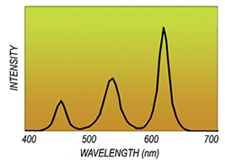Lumens Per Dollar

Last November, in Orlando, I was wandering through the exhibit area of the LDI Show and, before slipping into the suspended state common to all convention attendees, recalled a good friend's facetious observation that the LDI Show should be renamed "the LED Show."
Yes, the manufacturers' conviction that all lighting ills within the entertainment field can be solved by fixtures crammed full of solid-state light emitters persists. For a few years now, this belief has generated great interest and anxiety among the user group of lighting designers and practitioners. It is my opinion that much of this interest is due to this group's fear that they may be missing something, and that hidden within these new developments is a tool that will advance our art. No one wants to be labeled as unenlightened or not up-to-date on the latest trend. The reader should be aware that I am not talking about the use of LED displays but rather the attempt to create LED replacements for the whole gamut of standard lighting instrument configurations—from the most complex moving light to a traditional softlight.
A NEW BENCHMARK
We are all aware of the common measure of a lighting instrument's efficiency (I know, efficacy), the ratio of luminance flux to electrical power or lumens per watt. What I am proposing is a new expression—let us call it the Investment Factor defined as "the ratio of light output to cost of the instrument, or lumens per dollar."
A perfect example would be that our newest and latest white light LED panel is going to be a replacement for our favorite soft source, a 4-foot square grip frame fitted with the diffusion of choice, say, grid cloth, lighted by an ancient 5-kilowatt Senior or a more "modern" 1200-watt HMI. My LED source will be composed of 16 one-foot square panels.

Fig. 1: Spectrum of a 3-LED "white" assembly For the moment, let's forget about any other consideration—in particular, the color spectrum—and assume that both setups, the old and the new, will give identical results, (dream on!). You will find that the Investment Factor will calculate to be greater than 6 (the cost for me to be up-to-date, use the latest technology and hold my head high among my peers will cost me six times the cost of the old way). You will also find that the ratio does not change much if I substitute a Chimera or a Kino-Flo for my original setup. Yes, but what about the "Mobility Factor," the ratio of lumens per pound? My new, modern 4-foot by 4-foot source weighs about 50 pounds for the lightest panels that are available—not an insignificant amount. In fact, most of the time I see the 4x4 units mounted on a Molevator or similar heavy-duty stand. Not only that, but the use of an HMI or fluorescent is actually a much "greener" solution as both yield greater efficacy. It is true that life expectancy of the LED lamp is predicted as being quite lengthy, but fluorescent lamps have a good record in this category.
There is one other slight problem that I should insert here. I will have to choose the configuration of the LED panel at the moment of purchase, and there will be no going back. I will have to choose the color of the source, tungsten or daylight, as well as the beam pattern of the panel, spot or flood. Murphy's Law will probably prevail in that my initial choice will not be the proper choice. Perhaps it is more useful to be able to set the color temperature of our source as we will in the next section.
THE COLOR MAZE
Let us address the realization of a "white" LED source capable of adjusting its color temperature. The most common method used to obtain programmable color temperature is to use multiple LED sources spread about the visible spectrum, (see Andy Ciddor's column, "Viewing LEDs in a Different Light"). The intensity of the LEDs can be adjusted so that when combined, the resulting source approximates a wide range of common color temperatures that we possibly might find useful; for example, 2700 to 8000 degrees Kelvin. Using this method, the discontinuities of intensity within the visible range of color wavelengths is "smoothed" to approximate the spectrum of a theoretical black-body heated to incandescence.
The competition between fixture manufacturers declaring who has the most number of different sources has already started. To illustrate this, Fig. 1 shows the result of combining three LEDs to get a more continuous spectrum. You can see that the smoothing is certainly not perfect and adding more sources of different color just creates more bumps. The more bumps the better, I suppose.
CRI CHEATING
The Color Rendering Index (CRI) was created by the pre-LED commercial lighting industry to provide a measurement of how effectively lamps will reproduce the visible colors when the lamp is used as the illumination source—with the emphasis on selling lamps rather than good science. This sleight-of-hand results in a number that relates to the response to 15 selected color samples under the test lamp, compared with the response to a perfect source, in most cases a black-body source.

Fig. 2: iFCP utilizes an IP backbone to interface between Fibre Channel SANs Here's where the magic comes in. The first adjustment was to create a "general" CRI index using only 8 of the 15 colors. In addition, the colors are not very saturated. What happens is that the index might indicate that reproduction is quite good, whereas, in actuality, it renders color quite poorly. With LEDs, the Color Rendering Index is quite far from being a proper indication of how the "white" will actually perform, given the bumps and valleys as a result of the very narrow spectrum of the individual sources.
THERE IS HOPE
We are in need of a means of honestly appraising the performance of all sources that do not create a color spectrum which is continuous—particularly one utilizing narrow spectrum sources as an LED. Intuitively, this suggests a way of comparing a black-body source that has a continuous spectral response with the unknown source. The Photometric Committee of ESTA has taken this challenge as its latest task. We can expect a result that is heavily favored to the needs of the lighting professional in the entertainment arena. Meanwhile, we must use subjective methods based on our experience to do this evaluation; i.e., side-by-side comparisons under production conditions.
If we only concentrate on the dial-in color spectrum aspect of our "white" LED fixture, this would be a very useful tool, a tungsten/daylight softlight if you will. As far as the discontinuous nature of the unit's output, I think that we can accept the multiple LED sourced fixtures currently available as suitable for use. The reasoning for this is very simple. For decades we have demonstrated that we can accept the similar imperfect rendering situation with fluorescent and metal halide sources. The only remaining obstacle is the unrealistic Investment Factor.
Bill Klages would like to extend an invitation to all the lighting people out there to give him your thoughts atbillklages@roadrunner.com.
The professional video industry's #1 source for news, trends and product and tech information. Sign up below.
